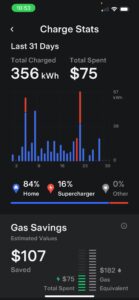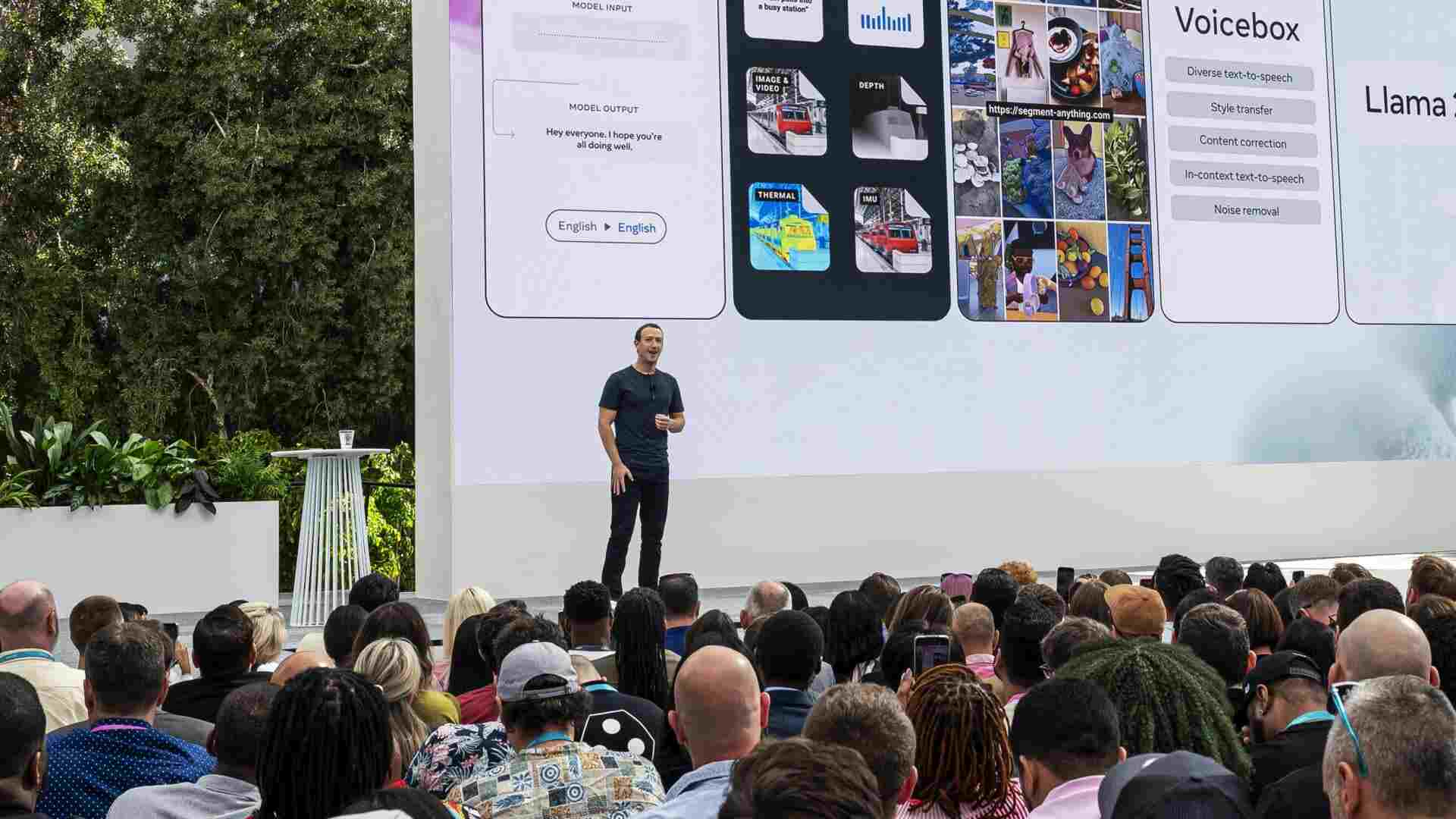- | 10:27 am
Yes, buying an electric car will save you money . . . in the long run
You can lower your carbon footprint—and your expenses—pretty quickly, depending on the model you buy and where you live.

There have been a number of high-profile electric vehicles in recent years, from the Tesla Model S to the Ford F-150 Lightning and the Chevy Bolt EV. With many models now pushing upwards of the 300-mile range, electric vehicles are looking increasingly more practical. And with gas prices soaring, they also look more economical.
But you still pay a substantial premium on most EVs. And even with government subsidies, it can take several years for the lower fuel and maintenance costs associated with EVs to pay off that premium. Affordability varies based on the model, local electricity rates, ricocheting gas prices, federal and state subsidies, and even the kind of home you live in.
Below, we’ll step through these variables to see how long it takes to start saving.
CHEAP “FUEL” PRICES
Electric propulsion costs less because electric motors are far more efficient than internal combustion engines (about 90% versus 40%). Electric cars also recoup energy from the spinning wheels when the car is coasting or braking. The U.S. Environmental Protection Agency (EPA) uses a figure called miles per gallon equivalent (MPGe) to calculate how far identical amounts of energy coming from gasoline and batteries can propel a car. The 2022 Chevy Bolt EV, for instance, has a combined (city/highway) MPGe of 120 miles—as does a Tesla Model S. The 2022 Chevy Spark, a gas-powered car that’s smaller and lighter than the Bolt EV, gets 33 miles per gallon.
The site fueleconomy.gov allows you to compare the cost of driving different cars. It finds that, traveling 15,000 miles per year, you’d spend, on average, $550 to run the Bolt EV or Model S, versus $2,050 for the Spark. In other words, if you drive more, you’ll recoup costs sooner.
But many factors affect cost. Global turmoil has caused gas prices to shoot up recently. Prices also vary by location. The more expensive your gas, the more you might save by going electric.
Electricity rates vary more dramatically, from 7.51 cents per kilowatt hour (kWh) in Louisiana to 27.55 cents/kWh in Hawaii. The median rate in the U.S. is 9.84 cents/kWh. Higher power prices eat into the savings of going electric.
Some EV makers help you calculate real-world savings. Tesla’s app considers your local electricity and gas prices to show exactly how much you’d save.
CHARGING DILEMMAS
Finding a charger can be a challenge, however. The U.S. has about 63,000 charging stations, with about 136,000 chargers—versus 145,000 petroleum gas stations, with 1.5 million nozzles.
And a gas pump can handle many more cars; filling a tank takes a few minutes. The most common EV charger, the 240V Level 2, takes 4 to 5 hours to add 100 miles of range. It’s only practical if you can leave your car at the charger, say at a work or shopping center parking lot, or if you charge at home.
An emerging option, called DC Fast Charge, can get a battery to 80 percent capacity (the recommended stopping point) in 20 to 60 minutes. But most EVs aren’t equipped for them. Fast Charge also strains the battery and can reduce its lifetime.
Public charging can be expensive, too. The median fee to visit charger provider EVgo is 30 cents/kWh—three times the typical home electricity cost. (The price drops to around 25 cents with a $6.99 monthly subscription plan.)

Tesla’s app shows your savings in real time.
You can save time and money by installing a home charger. One of the top-rated Level 2 models, the Enel X Way JuiceBox 40 sells for about $650, and installation will cost at least $600 (and depending on your home wiring, potentially a lot more). The federal government provides a tax credit of up to 30% or $1,000—whichever is less. So the setup cost as little as $875 in this example. There also may be state incentives or incentives from your utility.
If your house has a 250V outlet handy (for items like electric dryers or some power tools and air conditioners), you can plug right in, no Level 2 charger required.
But home charging may not be an option for people living in apartments or condos (about a third of Americans), or in urban rowhouses. Those unlucky EV buyers may be stuck paying public-charger rates, although some workplaces provide free juicing—assuming you can snag a charger.
“When you talk about cost savings from buying an EV, [home charging is] going to play a big role,” says Debapriya Chakraborty, a University of California, Davis, researcher who studies EV economics. “For some households, it might be better to wait as the charging infrastructure builds.”
But if you can charge at home or reliably at your workplace, read on to learn about your savings.
STICKER PRICES AND SUBSIDIES
Electric vehicles (almost) always trail gas burners on sticker price. For instance, the gas-powered Hyundai Kona SE, starts at $21,300. The Hyundai Kona Electric starts at $34,000. Add the cost of a home charger, and you’re up to at least $34,875.
But here’s where the savings come into play. It costs $1,700 less per year to drive the 120 MPGe Kona for 15,000 miles on electricity than the 30 MPG gas version. That allows you to recoup your costs in eight years. Electric cars are also cheaper to maintain, according to AAA, costing $330 less per year. So you could break even in 6.7 years.
These calculations assume you pay full price, which is often not the case. The federal government offers electric-car tax credits of up to $7,500, based on battery capacity. The credit soon disappears after the carmaker has sold 200,000 EVs (neither Tesla nor GM, including Chevy, models qualify anymore). But the Kona Electric (like most other EVs) still does, earning a $7,500 credit. (You can see all covered cars on fuleeconomy.com.) That brings the break-even time for the Kona Electric to just 3 years.
You get a stunning deal with the Ford F-150 Lightening pickup. It starts at $41,769—a premium over the entry-level gas model’s $30,495 price. But the Lightening is far-better equipped, with an extended cab, more horsepower and torque, fancier wheels, and other goodies. A roughly equivalent gas model costs $ 48,430. That’s right: Going electric is almost $7,000 cheaper. Add the cost of the charger and subtract the federal tax credit, and you save $13,286. That’s before the $2,400 annual fuel savings. (Sadly, all 2022 F-150 Lightning models are sold out.)
Some states also subsidize electric vehicles. Colorado currently provides a $2,500 tax credit—dropping that Kona Electric pay-off time to 1.8 years. The National Council of State Legislatures offers a directory of state EV incentive laws.
But there’s an elephant in the passenger seat for many potential EV buyers: the worry about how long the very expensive battery pack will last. Still, it’s very unlikely you’ll get stuck replacing a battery. The federal government requires manufacturers to warranty EV batteries for at least eight years or 80,000 miles. Several manufacturers (including Chevy, Ford, Hyundai, and Tesla) offer coverage of 100,000 miles or more.
The California Air Resources Board has also proposed a requirement that, by 2026, EV batteries must not only last for 10 years/150,000 miles but retain 80% capacity. That standard is very doable, even with current technology, says Dan Foster, a senior manager at Ricardo Strategic Consulting. “There’s Priuses out there running with half a million miles on them,” he says.
WORTHWHILE FOR YOU, AND THE PLANET
There’s another kind of savings, perhaps the most important for many EV buyers: saving the environment. An EV requires a lot of energy (not all of it green) to produce and transport. And mining conditions for key EV minerals like lithium, cobalt, nickel, and rare Earth elements can be devastating to the environment and to laborers in underdeveloped, poorly regulated countries.
But EVs have a lesser net environmental effect than gas models, says Foster, whose company did an extensive study for the European Commission. EVs do have bigger upfront environmental impacts, but they are net positive after about 30,000 miles, says Foster. (Figures vary based on factors, such as electricity sources.)
And EVs are eventually net positive for many buyers’ pocketbooks—especially house owners. With the number of charging options growing and the costs of EVs gradually dropping, they will be an ever more appealing option for consumers.
Also, read to know on how driving tests in Qatar to be conducted in smart cars for higher precision, here.
To find more insightful blogs & news, Subscribe to our newsletter here.






































